
- Index
- Age
- Brand
- 21st Century Toys (12)
- Alert Line (18)
- Army (10)
- Arsa (10)
- Bolt Action (9)
- Buren (6)
- Did (15)
- Doxa (7)
- Dragon (33)
- Dragon Models (6)
- Forces Of Valor (24)
- Glycine (8)
- Handmade (43)
- Helvetia (19)
- King & Country (42)
- No Brand (7)
- Record (6)
- Ultimate Soldier (11)
- Warlord Games (21)
- Zenith (12)
- Other (3469)
- Conflict
- Style
- Antique (10)
- Army (8)
- Army Cap (2)
- Bomber Jacket (3)
- Casual (2)
- Leather Belt Holster (9)
- Leather Flap Holster (4)
- Luxury: Dress Styles (6)
- Military (160)
- Military Jacket (14)
- Military, Vintage (2)
- Motorcycle Jacket (7)
- Original (2)
- Overcoat (5)
- Pea Coat (2)
- Pendant (2)
- Signet (6)
- Trench Coat (7)
- Vintage (11)
- Wwii (2)
- Other (3524)
- Theme
- Type
- Action Figure (77)
- Badges (13)
- Binoculars (32)
- Boot (11)
- Coat (87)
- Equipment (11)
- Field Gear (159)
- Hat / Cap (51)
- Helmet (18)
- Jacket (101)
- Medals & Ribbons (11)
- Personal Gear (73)
- Pocket Watch (11)
- Ring (18)
- Soldier (16)
- Tactical Sling (26)
- Tank (36)
- Uniform (41)
- Uniform / Clothing (119)
- Wristwatch (109)
- Other (2768)
WWII 1942 German Army Bomber Transport Fw-200K Kurier W. E. F. T. U. P. ID Poster
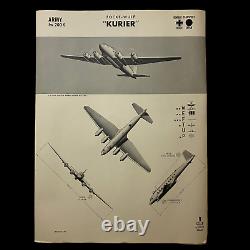
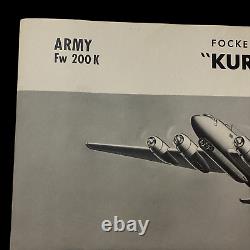
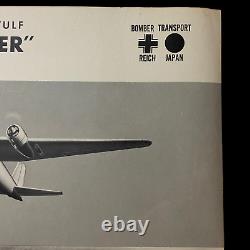
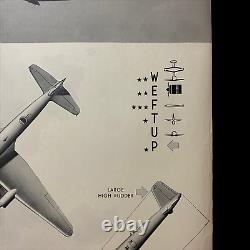
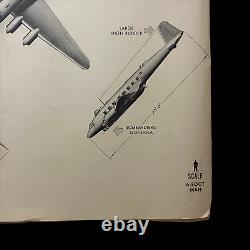
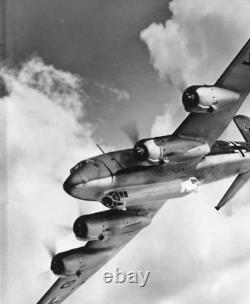


Size: 19 x 25 inches. This original'RESTRICTED' aircraft identification poster was published by the U. Naval Aviation Training Division November 1942. This poster was posted as a training tool as well as an in theater ID poster to help U. And other Allied pilots, bomber crews and Naval personal to identify Allied and enemy aircraft. Or Wing, Engine, Fuselage, Tail, Undercarriage, Peculiarities was a system set up for the purpose of aircraft identification and recognition. World War II saw some of the first introduction of these aircraft ID poster to prevent friendly fire and more accurate plane recognition in combat. It was believed these posters alone could save countless lives from friendly aircraft-on-aircraft or friendly anit-aircraft fire. These posters also could cut down precious second pilots, bomber gunners, and naval gun crews would have to ID a plane flying towards them intern saving their lives by shooting first.
Each poster provides the silhouettes, dimensions, and relevant information to educate both air and ground personnel in aircraft identification. Immediate identification of aircraft, friendly or not, was essential in order for the observer whether in the air e. Pilot, gunner, or patrol observer, or on the ground, e. Anti-aircraft crew to determine his next course of action e. Acknowledge, attack, evade, or report.
Each poster details a large clean sky and background image of the specified aircraft located as the main top imagine on the poster. It also contains important'peculiarities' such as where certain gun emplacements are located, other special aircraft features, as well as wing and length measurements. The Focke-Wulf Fw 200 Condor, also known as Kurier to the Allies (English: Courier), was a German all-metal four-engined monoplane originally developed by Focke-Wulf as a long-range airliner.The Luftwaffe also made extensive use of the Fw 200 as a transport aircraft. The Luftwaffe initially used the aircraft to support the Kriegsmarine, making great loops out across the North Sea and, following the fall of France, the Atlantic Ocean. The aircraft was used for maritime patrols and reconnaissance, searching for Allied convoys and warships that could be reported for targeting by U-boats. The Fw 200 was also used as a transport aircraft, notably flying supplies into Stalingrad in 1942.
After late-1943, the Fw 200 came to be used solely for transport. For reconnaissance, it was replaced by the Junkers Ju 290, and even some examples of the Heinkel He 177A serving with KG 40. As France was liberated, maritime reconnaissance by the Luftwaffe became impossible as the Atlantic coast bases were captured. Production ended in 1944 with a total of 276 aircraft produced.
